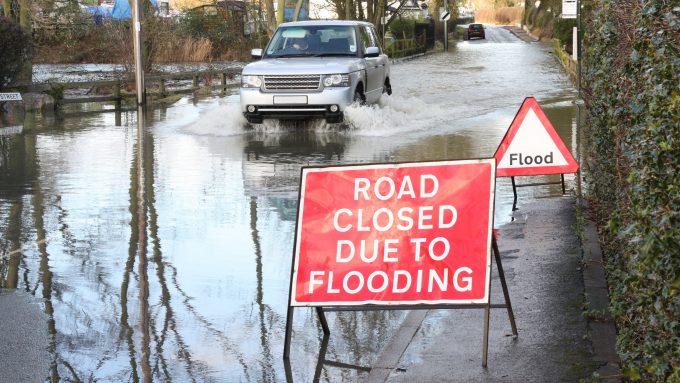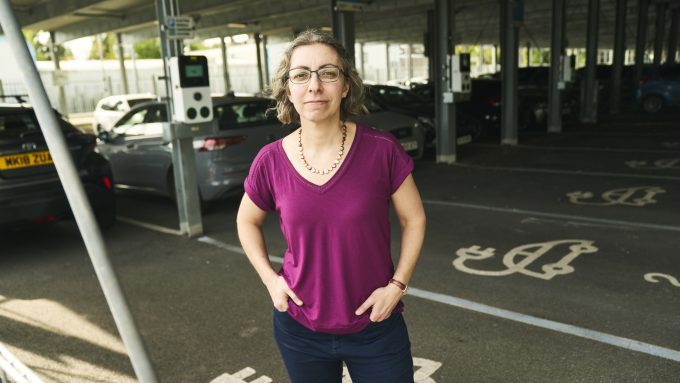
Can innovation support passenger safety at the platform edge?

Its purpose was to investigate whether innovative detection and response systems could successfully provide a cost-effective alternative to Platform Edge Doors for the safety of railway passengers at the platform/train interface. The project explored the market readiness of key supplier concepts and technologies, as well as future opportunities for development and growth.
Project Challenge
The focus for the project was the platform-train interface (PTI), an area of rail operations exposed to a significant range of hazards. According to the Rail Safety and Standards Board 48% of the total passenger fatality risk on mainline railway network occurs at the PTI.
It is therefore imperative to manage the PTI, not only for reasons of passenger safety, but also to reduce service disruption.
In terms of existing proven solutions, platform edge doors (PEDs) are an effective, option that are commonly used. They are not without their issues, however. Importantly, they are expensive to install, particularly in a retrofit situation.
This raises the question: Can innovative technologies offer a deliverable and advantageous alternative to PEDs, for example through being more operationally flexible, infrastructure-light, and cheaper?
In response, the project sought to identify and investigate systems that use sensors to actively detect and respond to hazards at the PTI.
Project Approach
Through analysis of safety standards and incident reports the project team derived five innovation challenges that alternative systems would need to satisfy:
- 1. Trap and drag;
- 2. Contact with side of train;
- 3. People or objects in gap;
- 4. People or objects on track; and
- 5. Persons on platform at risk of collision.
The five challenges were defined in such a way as to address areas of safety innovation but exclude hazards already sufficiently controlled. For example, the trap and drag challenge focuses specifically on thin items trapped in doors, as sensitive edge doors effectively detect wider objects.
Solutions to the challenges, therefore, require the achievement of situational awareness, detection of hazardous scenarios, and filtering-out of non-hazardous scenarios. The challenges formed the core of a Call to Industry to develop and demonstrate proposed solutions.
Answering that call, five industry suppliers became project partners, with each of the innovation challenges covered by two different solutions providers. Representative of a broad cross-section of the industry, the suppliers ranged from multinationals with multi-billion turnovers, to small startups.
These five suppliers are:
- Bosch Engineering GmbH
- Continental Engineering Services Ltd
- Creactive Design
- CrossTech
- Thales Ground Transportation Systems (UK) Ltd
Working together with these five partners, and in collaboration with the Department for Transport and Transport for London, the Catapult built an understanding of the systems and safety approach required, with solutions evidenced by physical demonstrations, and supported by cost estimations.
This approach helped the project verify the capability and maturity of the systems, plus review the economic case.
Project Learnings
The project generated learnings in three key categories:
• Solution concept;
• Market readiness;
• Future opportunities.
Solution concept: Across the project, all concept demonstrations utilised a Sense, Think, Act model to detect and respond to hazardous events. All five suppliers also used cameras and artificial intelligence (AI) analytics to identify objects and events, flagging these technologies as essential for this use-case. In addition, some suppliers employed light or radio detection and ranging sensors (lidar, radar) to enhance situational awareness.
Whether the suppliers offered train- or platform-based solutions proved a key point of difference.
The project demonstrated that train-based systems would:
• Be comparatively straightforward to rollout with new rolling stock;
• Have the added benefit of covering some hazards between stations;
• For space constrained systems providing situational awareness along the side of the train, and therefore covering the first three challenges, may be impractical;
• Have coverage limitations in front of the train depending on approach-speed and line-of-site of the approaching guideway.
By contrast, platform-based systems would:
• Have a comparatively high rollout impact on existing infrastructure and service operations;
• Provide constant monitoring of the station area, irrespective of approaching train line-of-sight;
• Provide situational awareness of hazards both on the track area and to the side of the train – and therefore cover all five challenges;
• Be limited to covering hazards in the platform area.
Allowing for additional expense, train- and platform-based systems could be combined to boost functional coverage and performance potential. In addition to systems that detect and respond to hazards, one supplier demonstrated a novel passenger interface concept to influence behaviour and prevent hazards from occurring. This shows promise as a supplementary measure, with further human behaviour trials needed to establish its efficacy.
Market readiness: Working with the Catapult over a four-month period, the industry suppliers developed their solutions, with proofs-of-concept successfully delivered. All systems were physically demonstrated in a rail-representative environment, with two suppliers testing at London Underground stations. All concepts used components, such as sensors, that are realistically able to be produced at sufficient scale, quality, and reliability.
However, significant further development would be required to progress from proof-of-concept stage to rollout, involving core parties as follows:
• The rail operator would need to develop a detailed functional specification, and design how the systems integrate into their system of operations;
• Industry suppliers would need to show extended product development, building the solution case on a large dataset from live operational environments.
Extended ‘shadow running’ trials conducted in live operational environments would be vital for these next steps.
Future opportunities: The ability of the market to rapidly develop and demonstrate concepts for this project highlights significant progression compared to prior market engagement. It is likely that industry will continue along this positive trajectory, increasing capabilities and maturity, whilst driving costs down.
In a retrofit situation, PTI detection and response concepts were shown to offer certain benefits over PEDs, including:
• Lighter works in the vicinity of the platform edge, cutting installation time and disruption;
• Train-based solutions that deliver safety benefits between stations;
• Minimised impacts to wider station features, including platform structures, advertising, heritage aspects, and ventilation;
• Greater operational flexibility, as the systems do not require level access between trains and platforms, unlike PEDs.
However, detection and response systems are not envisaged to control incidents to the same degree as the physical prevention provided by PEDs.
At this stage, consideration of PTI detection and response system costs and benefits revealed that the level of uncertainty is currently too great to establish the true economic case, compared to PEDs. Further iterative development of system options and investment implications would therefore help build a robust proposal.
What is proven is the development potential of PTI detection and response concepts going forward. The project demonstrated both the credibility of possible solutions available and the strength of supplier appetite within the industry to work collaboratively on advancing and delivering cost-effective alternatives to PEDs. Moreover, the project highlighted the wide application potential of detection and response technology across the transport domain.
"By working collaboratively with CPC and TfL, we were able to successfully demonstrate that by using modern AI computer vision techniques we can reliably detect objects becoming trapped in train doors and also persons entering the gap between the platform edge and train body. Whilst of course, this technology needs to be further developed, tested and approved, we are confident we have a viable technology solution that with further investment can be rapidly scaled across the network for the benefit of operational performance and passenger safety."Haydon Bartlett-Tasker MD, CrossTech
Find out more about innovation in our rail and stations ecosystem.





